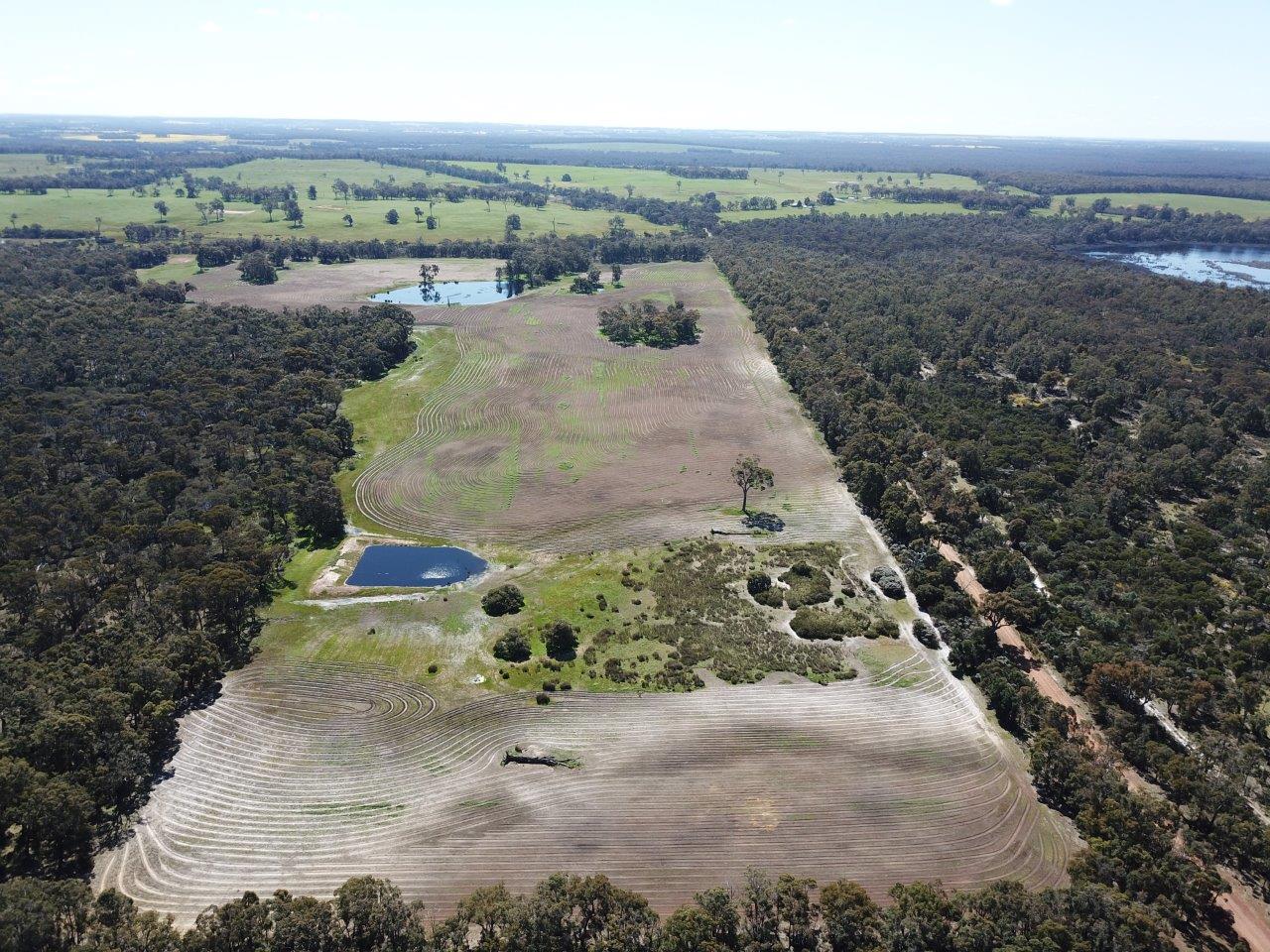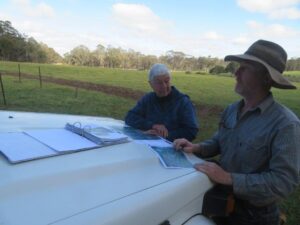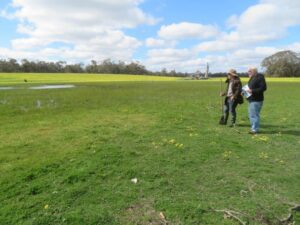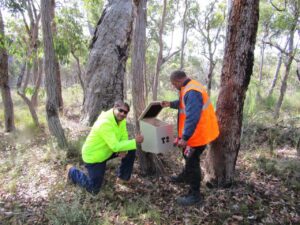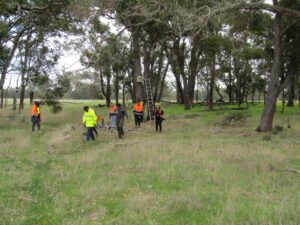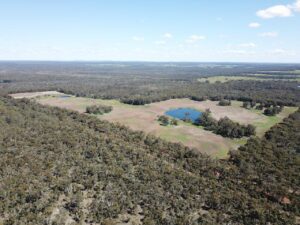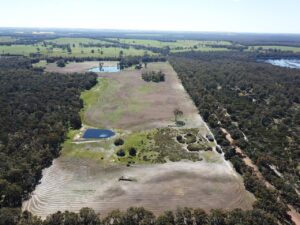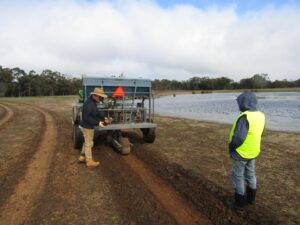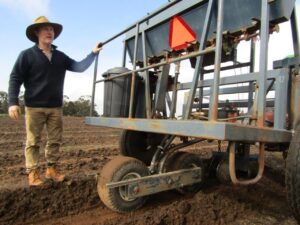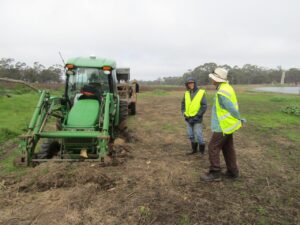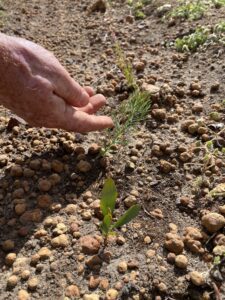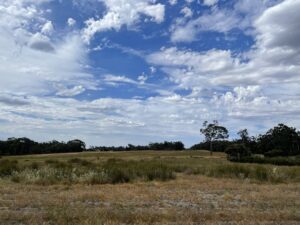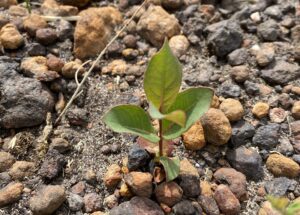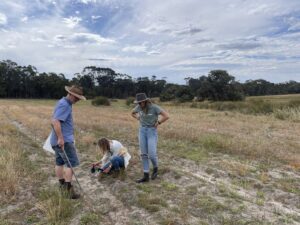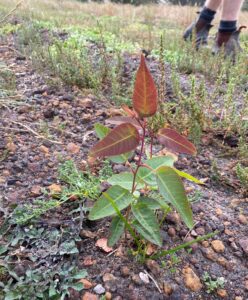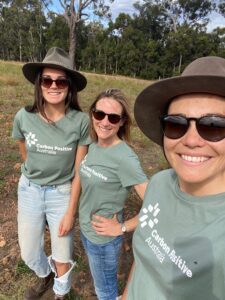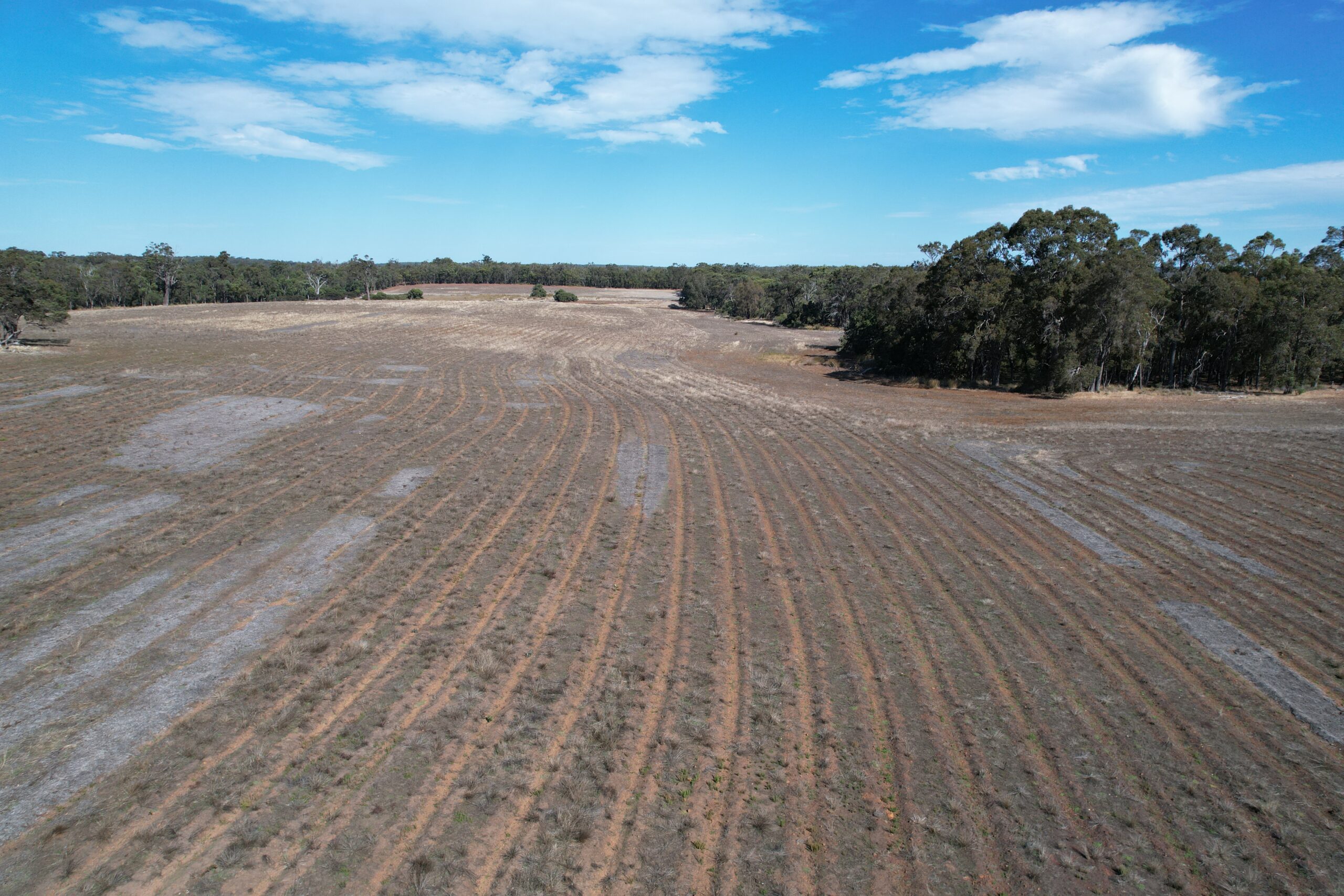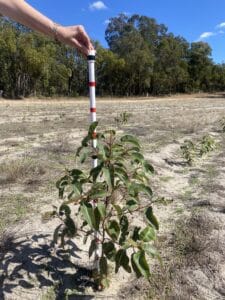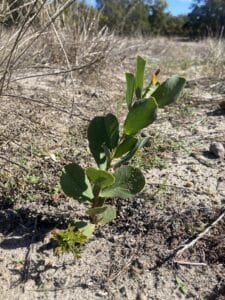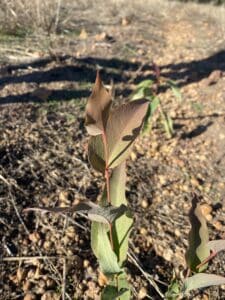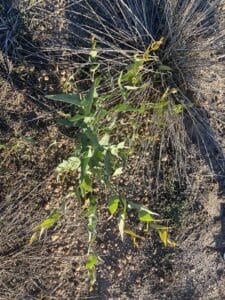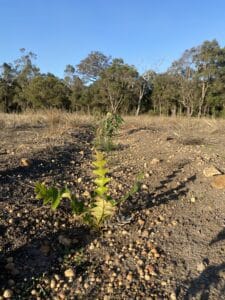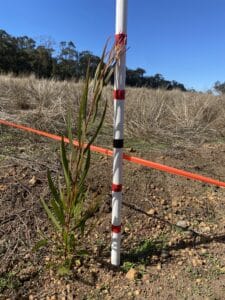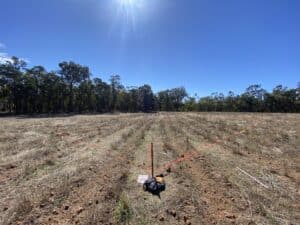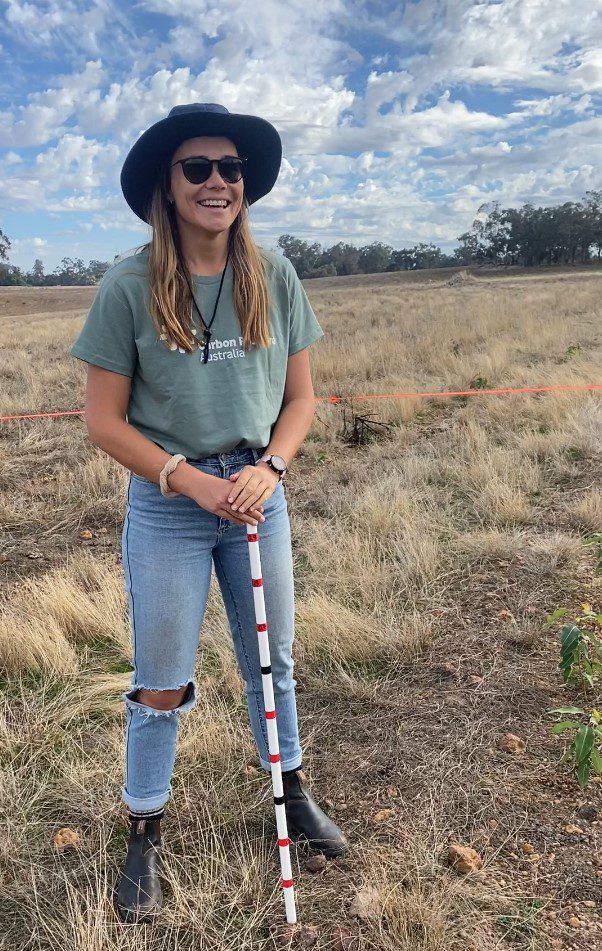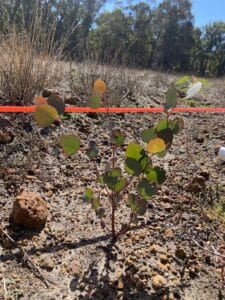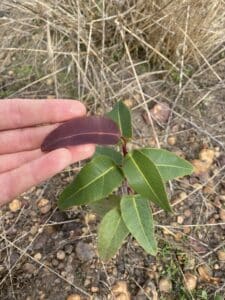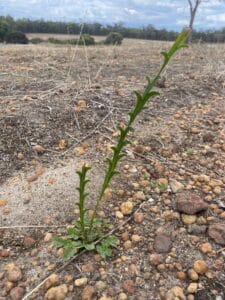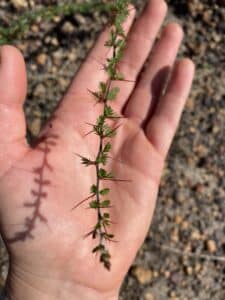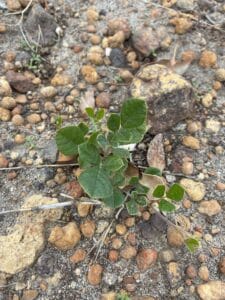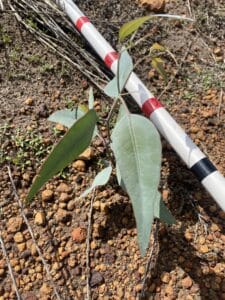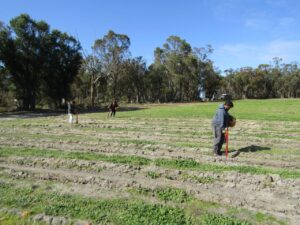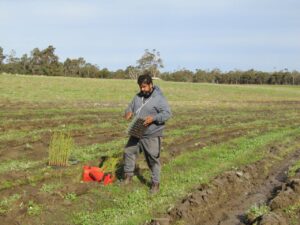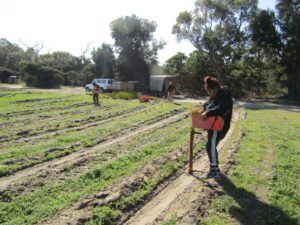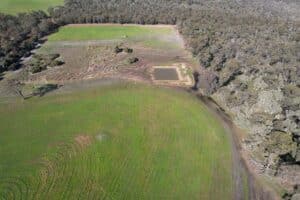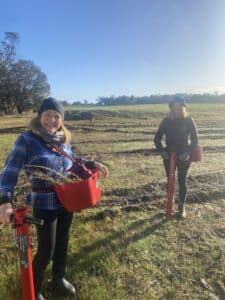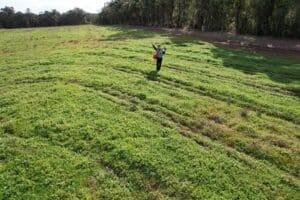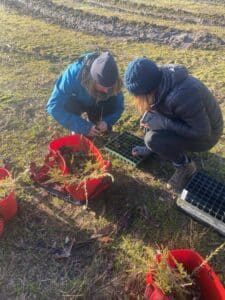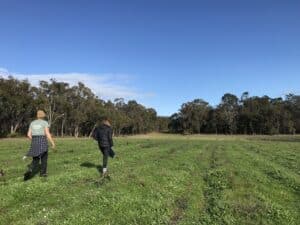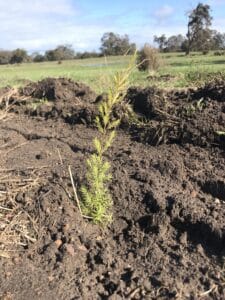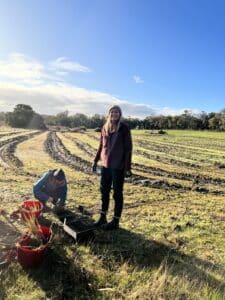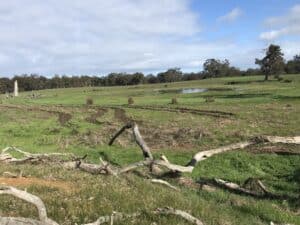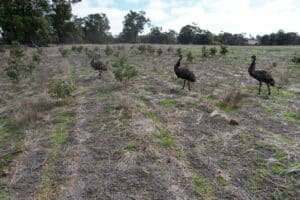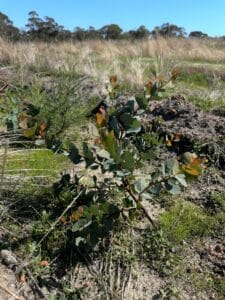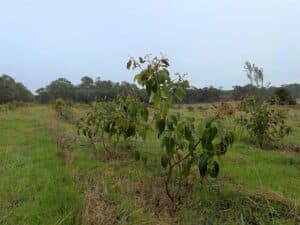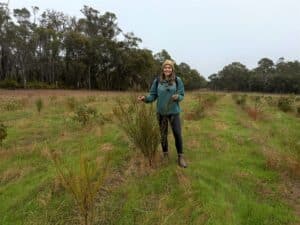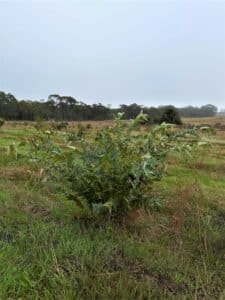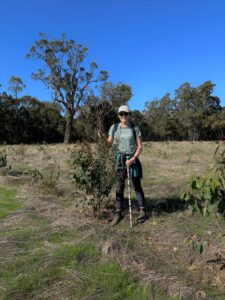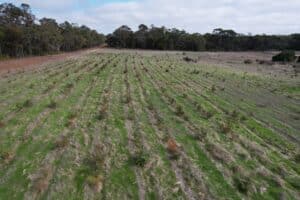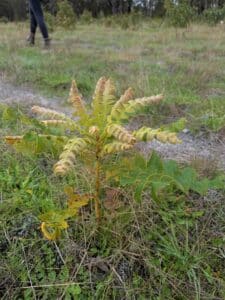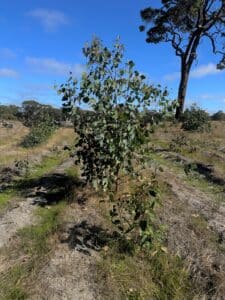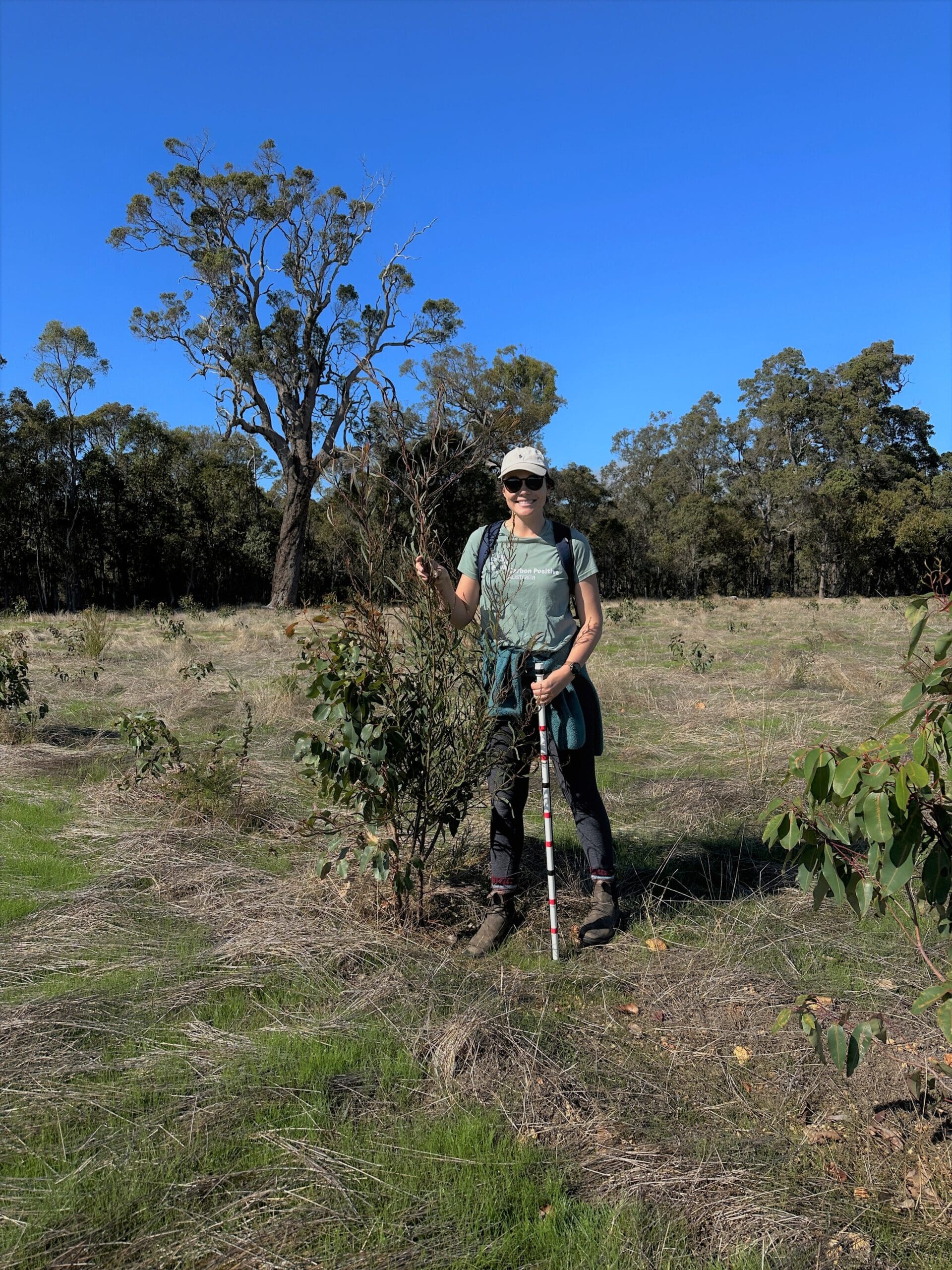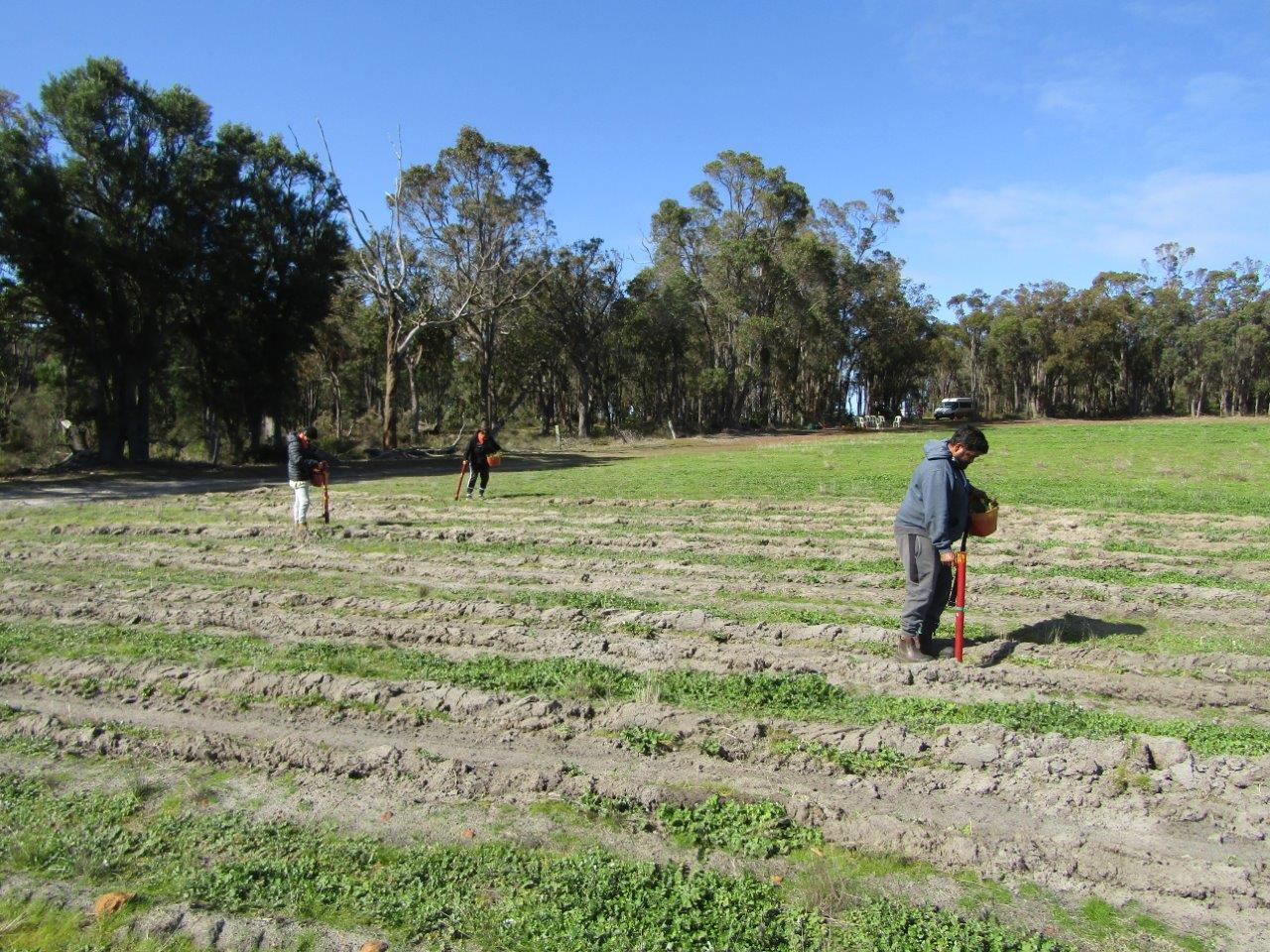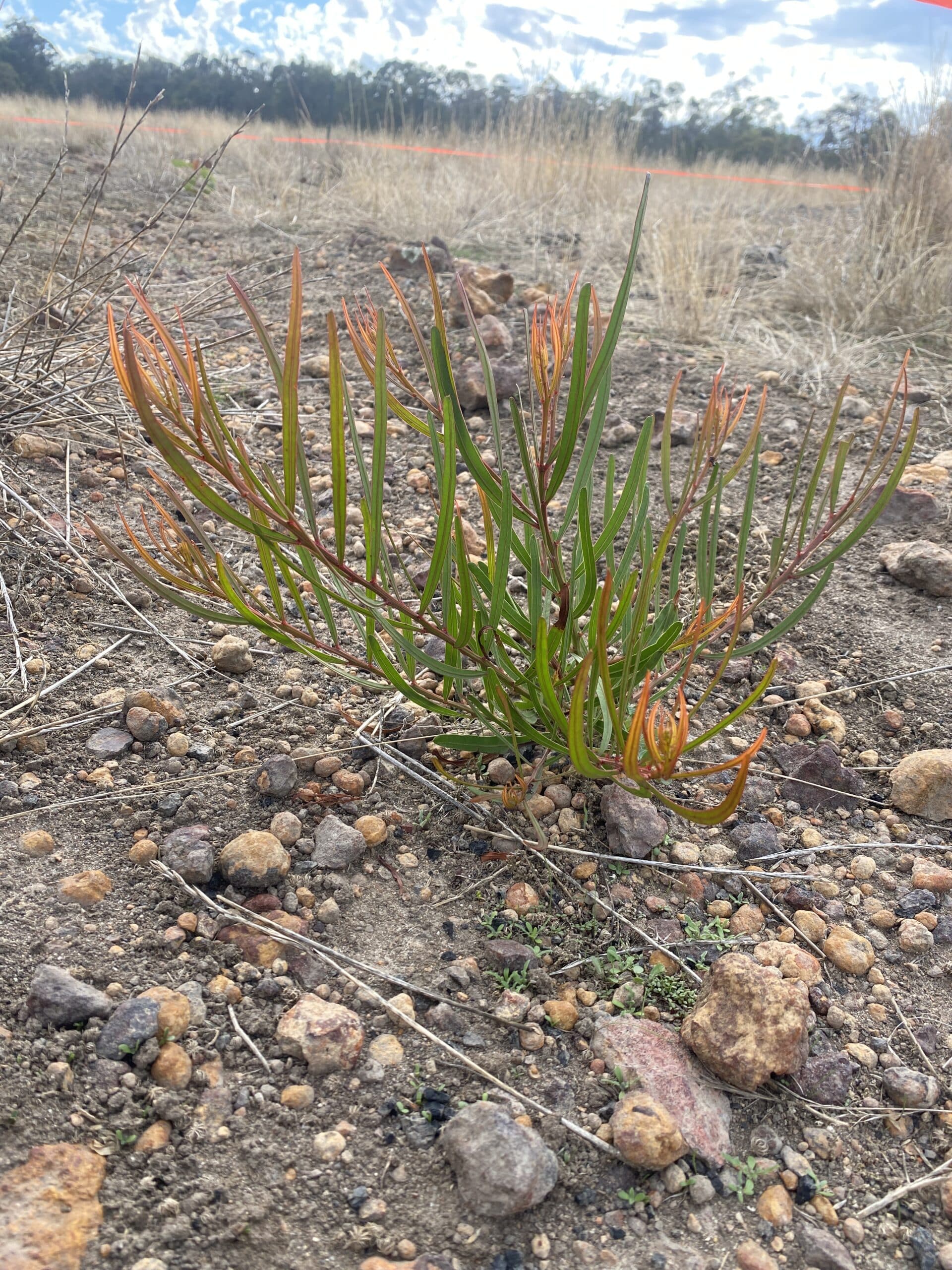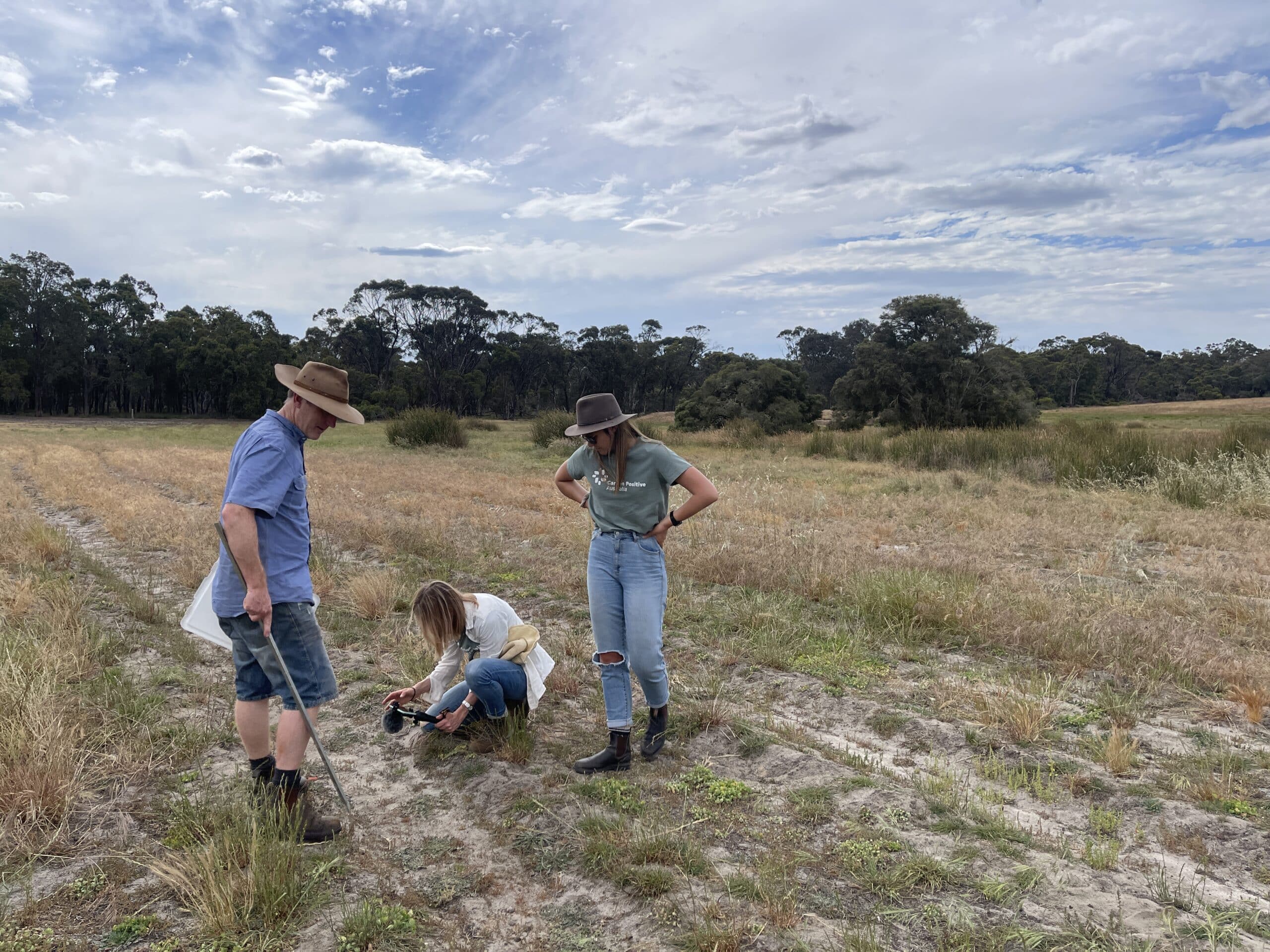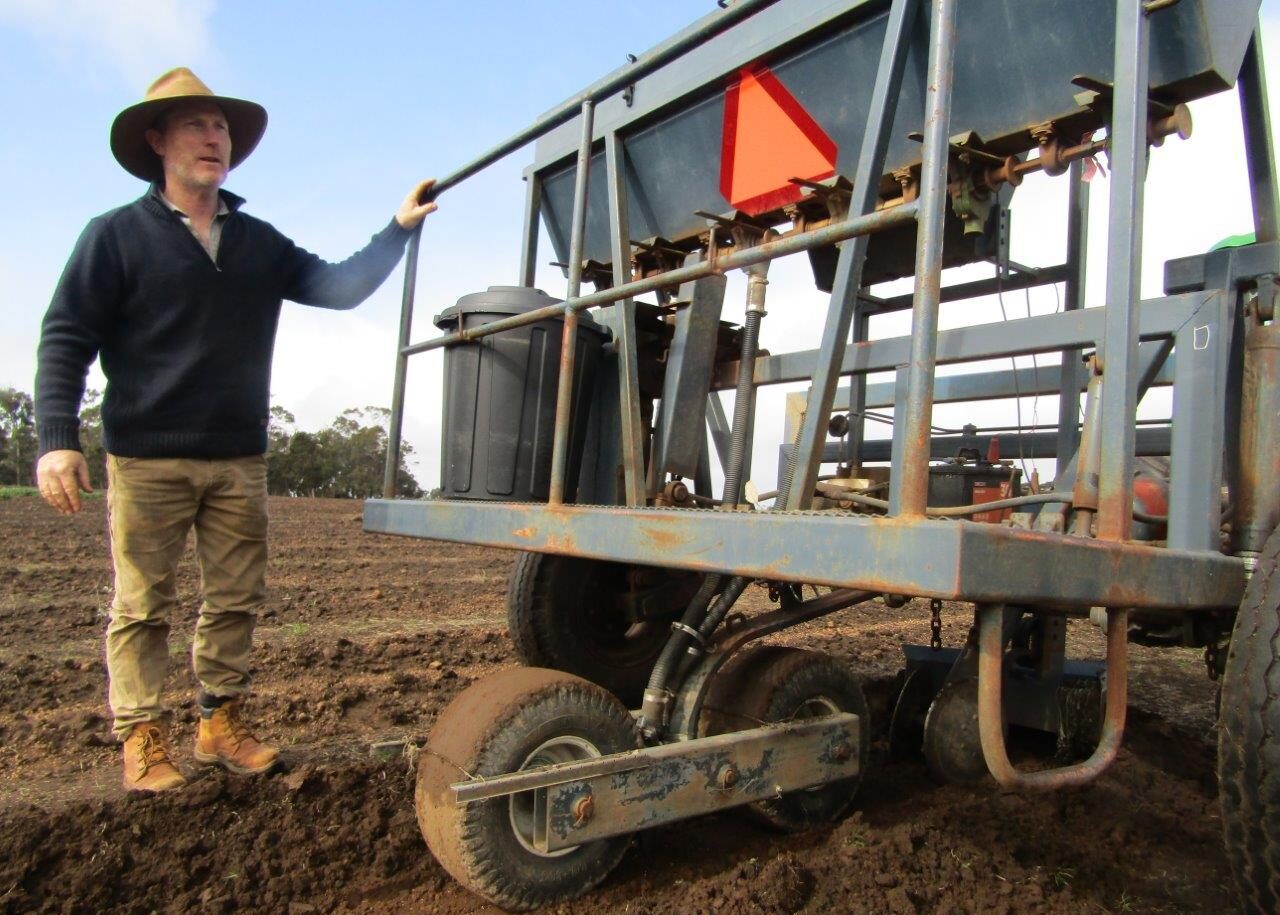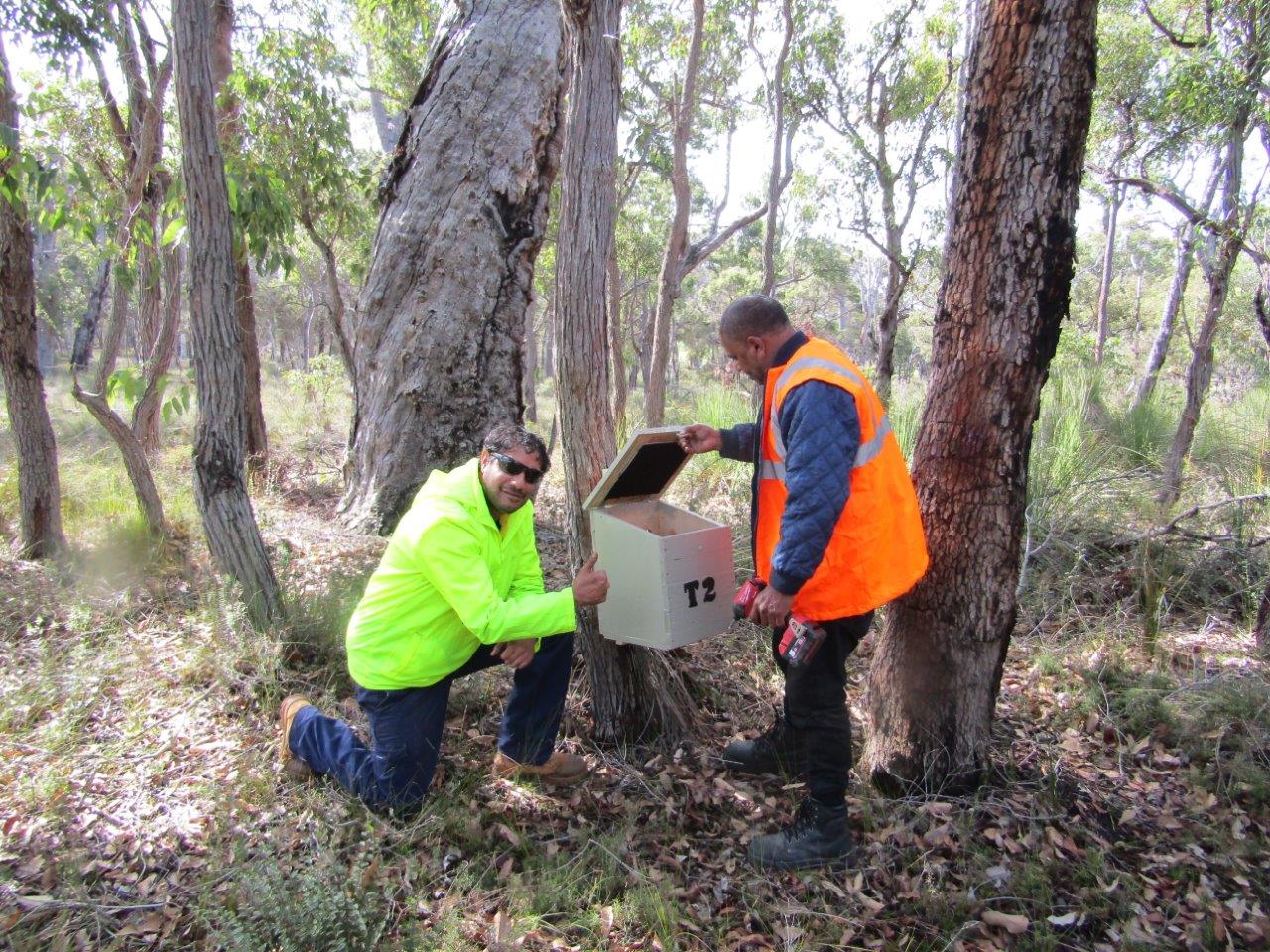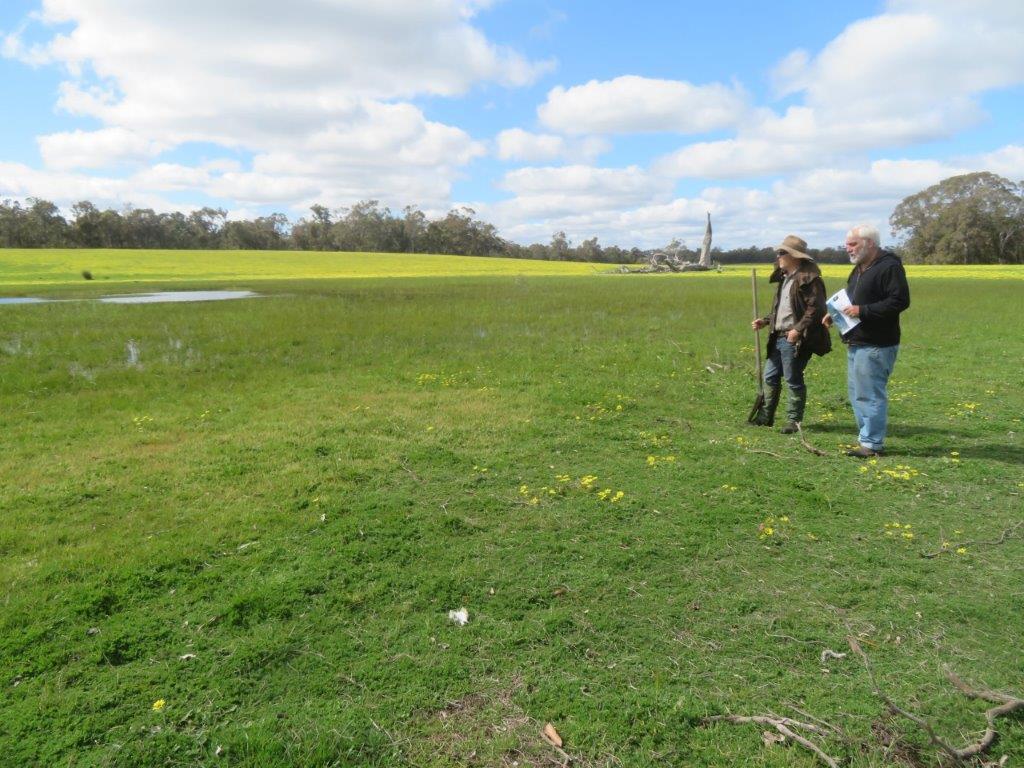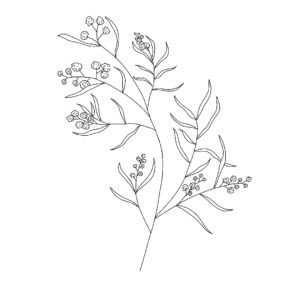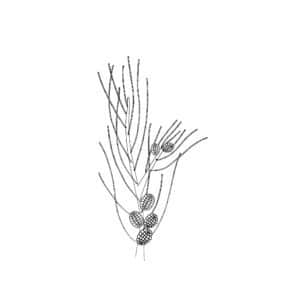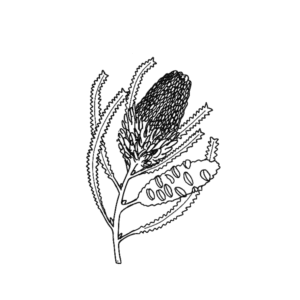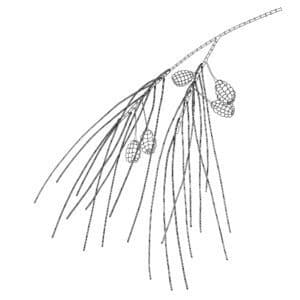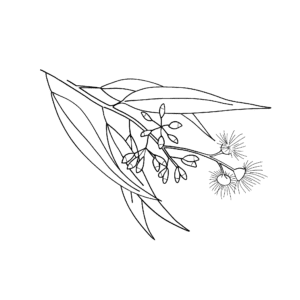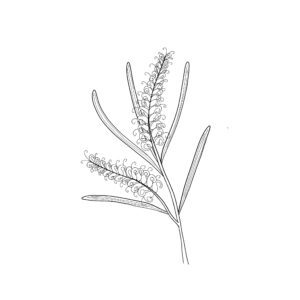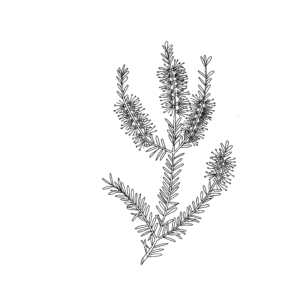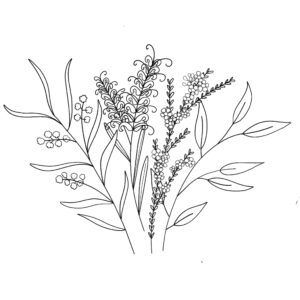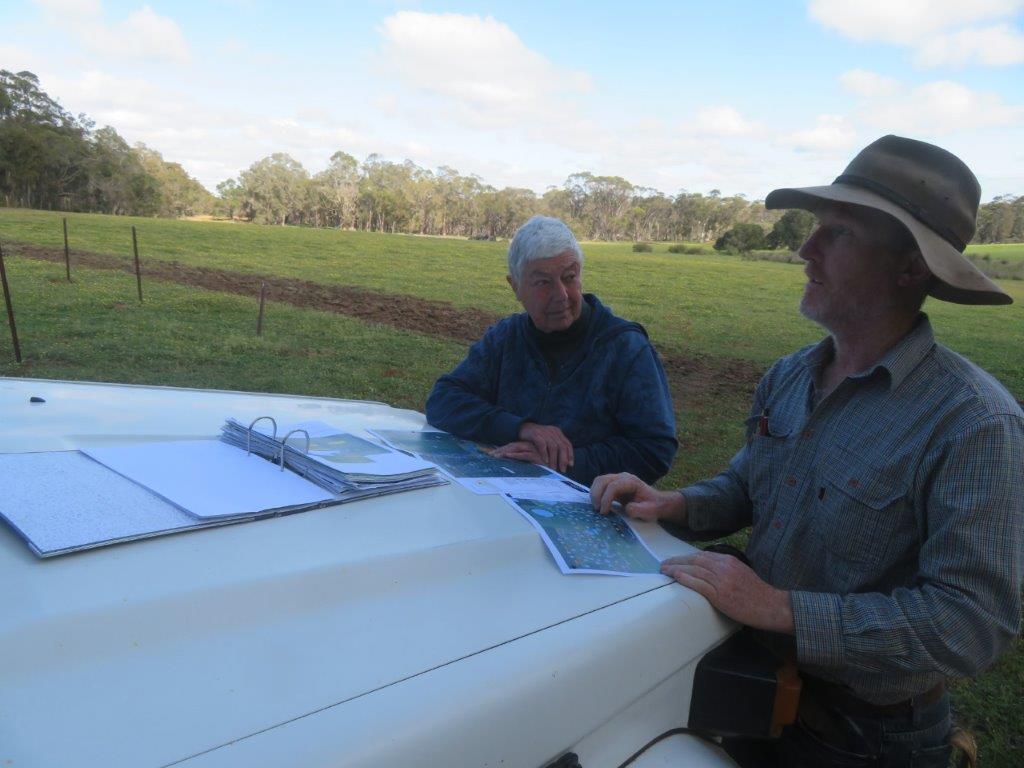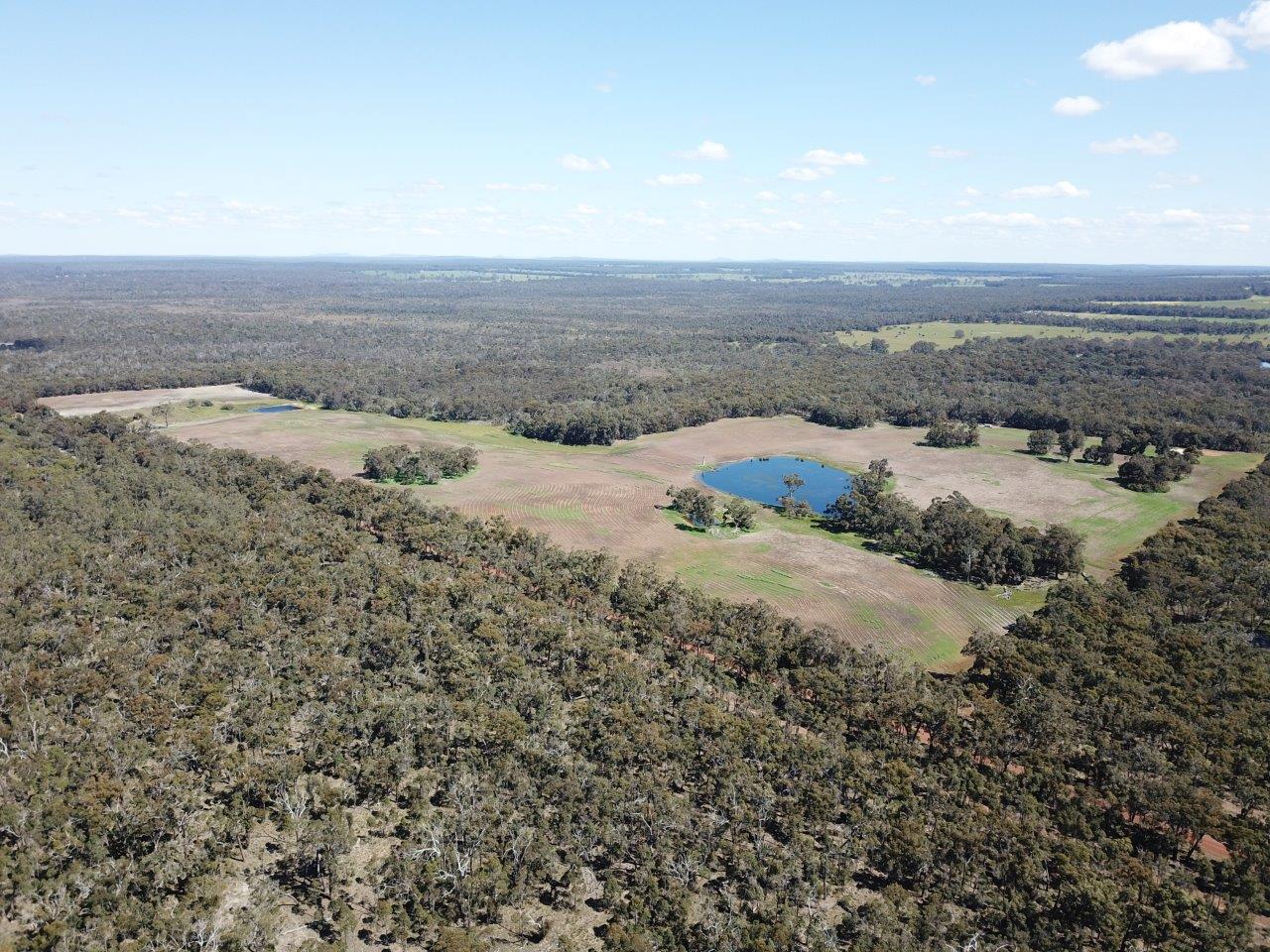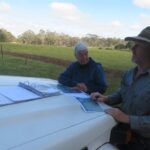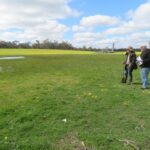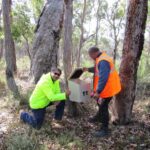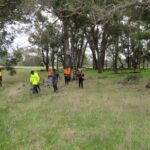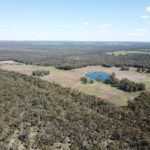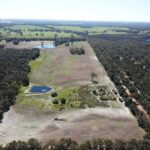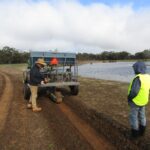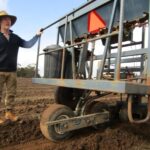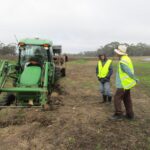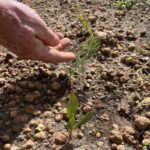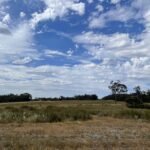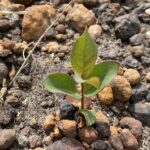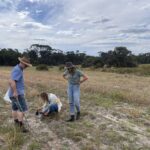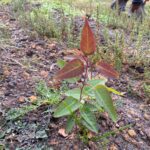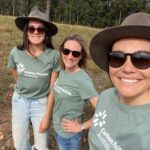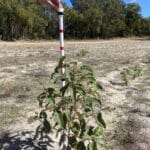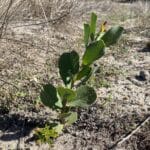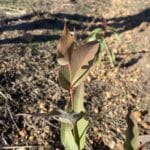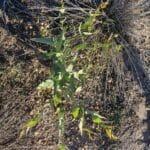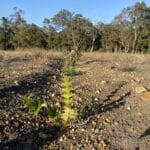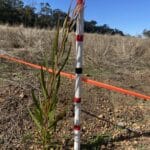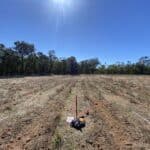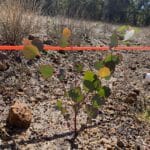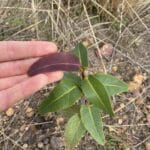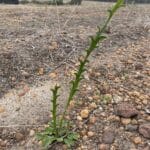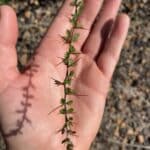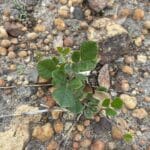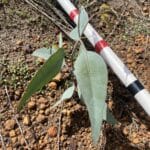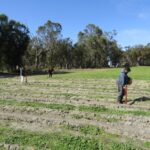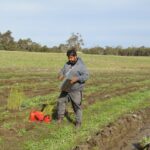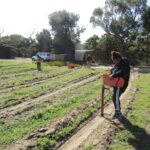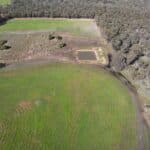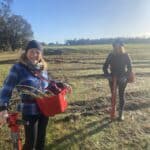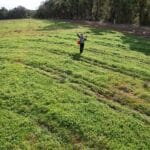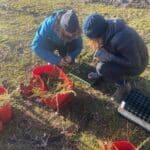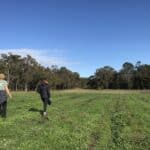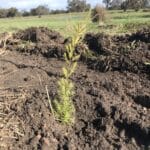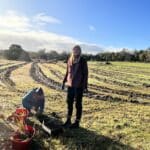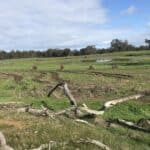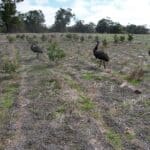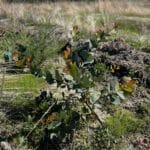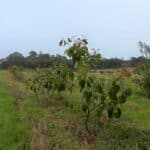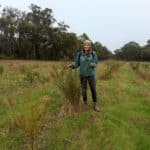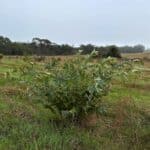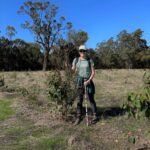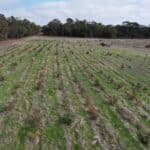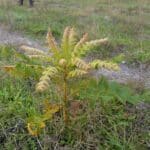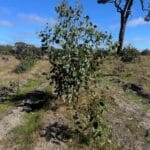![two people standing over a car]()
Site assessment and planning (Photo: Basil Schur).
![Two men standing overlooking a cleared area of land.]()
Dr Geoff Woodall and Basil Schur (Green Skills) during initial site assessment.
![One man kneeling on one knee next to a fauna habitat box whilst another man is standing over the box holding the lid open]()
Mt Barker Noongar Rangers installing fauna habitats in the remnant bushland surround the project site (Photo: Basil Schur).
![Mt Barker Noongar Rangers installing fauna habitats.]()
Mt Barker Noongar Rangers installing fauna habitats (Photo: Basil Schur).
![Aerial landscape shot of remnant bushland and cleared land about to be planted.]()
The project area, ripped and ready for seeding (Photo: Green Skills).
![Aerial landscape shot of remnant bushland and cleared land about to be planted.]()
The project area, lines ripped and ready for seeding (Photo: Green Skills)
![Two men inspecting planting machine]()
Dr Geoff Woodall and Green Skills team member inspecting during planting (Photo: Green Skills).
![Man standing next to a direct seeding machine]()
Dr Geoff Woodall with the direct seeding machine used to plant the site (Photo: Green Skills).
![Planting tractor bogged in wet ground]()
The planting tractor bogged due to wet conditions (Photo: Green Skills).
![Close up of two young native Australian seedlings with man's hand reaching out to touch the seedling in the background]()
Hakea lissocarpha (‘Honey bush’) and Hakea undulata (‘Wavy-leaved hakea’) seedlings germinated from seed planted approx. 6 months prior.
![View of the Tootanellup site a few months post planting with remnant vegetation present]()
View from the southern end of the planting site.
![Small germinated seed with three leaves present at the Tootanellup planting site]()
An emerging Eucalyptus marginata (‘jarrah’) seedling.
![Three people in paddock with low lying grass. Two are standing, one is crouching down taking a photo of a seedling which has germinated in a planting row.]()
Dr. Geoff Woodall with CPOZ team members, Cath and Jess, assessing germination rates during the site visit.
![Native Australian seedling in a paddock with a person's booted feet in the background]()
A healthy Corymbia callophylla (‘Marri’) seedling.
![Three team members taking a selfie at the Tootanellup project site wearing new carbon positive Australia shirts]()
The CPOZ team enjoying the sun and high seedling germination.
![Aerial photo of dry paddock with planting rows]()
Drone image looking south across the planting site.
![Measuring stick behind a Corymbia calophylla ('Marri') seedling]()
The tallest seedling spotted on site – an 80cm tall Corymbia calophylla (‘Marri’).
![Hakea prostrata alongside an emerging Melaleuca seedling.]()
Hakea prostrata alongside an emerging Melaleuca seedling.
![Close up of a Daviesia cordata ('Bookleaf') seedling.]()
Close up of a Daviesia cordata (‘Bookleaf’) seedling.
![A thriving Daviesia cordata ('Bookleaf') seedling.]()
A thriving Daviesia cordata (‘Bookleaf’) seedling.
![Banksia grandis ('Bull banksia') with Melaleuca and Eucalyptus seedlings in the background growing in planting rows.]()
A healthy Banksia grandis (‘Bull banksia’) with Melaleuca and Eucalyptus seedlings in the background.
![Measuring the height of an Acacia myrtifolia ('Myrtle Wattle)' seedling.]()
Measuring the height of an Acacia myrtifolia (‘Myrtle Wattle)’ seedling.
![Monitoring plot measure out with orange tape]()
One of the 14 permanent monitoring plots established during the assessment.
![Young woman standing in a field holding a measuring stick to conduct monitoring at a carbon planting site.]()
CPOZ team member, Jess, during the monitoring assessment.
![A Eucalyptus decipiens ('Redheart') seedling in a monitoring plot marked out by orange tape]()
A Eucalyptus decipiens (‘Redheart’) seedling in one of the plots.
![Hand holding a red leaf on a A Corymbia calophylla ('Marri') seedling.]()
A Corymbia calophylla (‘Marri’) seedling.
![An Acacia stenoptera ('Narrow-winged wattle') seedling.]()
An Acacia stenoptera (‘Narrow-winged wattle’) seedling.
![Close of up a hand holding an Acacia pulchella ('Prickly Moses Wattle') branch with it's characteristic spikes.]()
Close of up an Acacia pulchella (‘Prickly Moses Wattle’) branch with it’s characteristic spikes.
![Close up of a small Kennedia prostrata ('Running Postman') seedling growing in rocky ground.]()
A small Kennedia prostrata (‘Running Postman’) seedling.
![measuring stick lying next to a Eucalyptus wandoo ('White Gum') seedling.]()
A beautiful Eucalyptus wandoo (‘White Gum’) in one of the monitoring plots.
![Tambellup Rangers hand-planting seedlings in newly ripped planting rows.]()
Tambellup Rangers hand-planting seedlings in newly ripped planting rows (Photo: Basil Schur).
![One of the Tambellup Rangers refilling a planting bucket with seedlings]()
One of the Tambellup Rangers refilling a planting bucket with seedlings (Photo: Basil Schur).
![Tambellup Rangers hand-planting near the end of a planting row]()
Tambellup Rangers hand-planting near the end of a planting row (Photo: Basil Schur).
![drone shot of a planting site showing newly ripped planting lines next to remnant bushland.]()
Planting site showing newly ripped planting lines next to remnant bushland.
![Two women smiling ready to start hand-planting.]()
KA and Cath (CPOZ) getting ready to start hand-planting.
![Drone shot of women standing in planting row with planting equipment.]()
KA (CPOZ) standing in a previously planted area of the site.
![Two women removing seedlings from trays and filling up buckets for planting.]()
KA and Cath (CPOZ) removing seedlings from trays and filling up buckets for planting.
![Two women walking through a planting site]()
Jess and Cath (CPOZ) checking out previously planted areas.
![Close up of a hand-planted seedling in a planting row]()
One of the hand-planted native seedlings.
![Two women packing seedling buckets]()
Jess and KA (CPOZ) collecting more seedlings.
![Waterlogging visible behind planting rows on the site.]()
Waterlogging visible behind planting rows on the site.
![Drone shot of emus walking across planting rows.]()
Drone shot of emus walking across planting rows.
![Close up of Eucalyptus seedling]()
Close-up of a healthy Eucalyptus.
![trees in planting row]()
Eucalyptus growing tall in planting row.
![Woman standing next to small tree]()
Jess (CPOZ) standing next to an Acacia myrtifolia.
![tree in planting row]()
Thriving Daviesia cordata (‘Bookleaf’) growing tall and wide.
![Woman standing next to tree]()
Jess (CPOZ) standing next to an Acacia myrtifolia, ready to measure its impressive height.
![seedlings in planting rows]()
Drone shot of seedlings successfully growing in planting rows.
![Close up of small tree]()
Healthy growing Banksia with morning dew on its leaves.
![Large and small tree in planting row]()
Impressively tall Eucalyptus.
